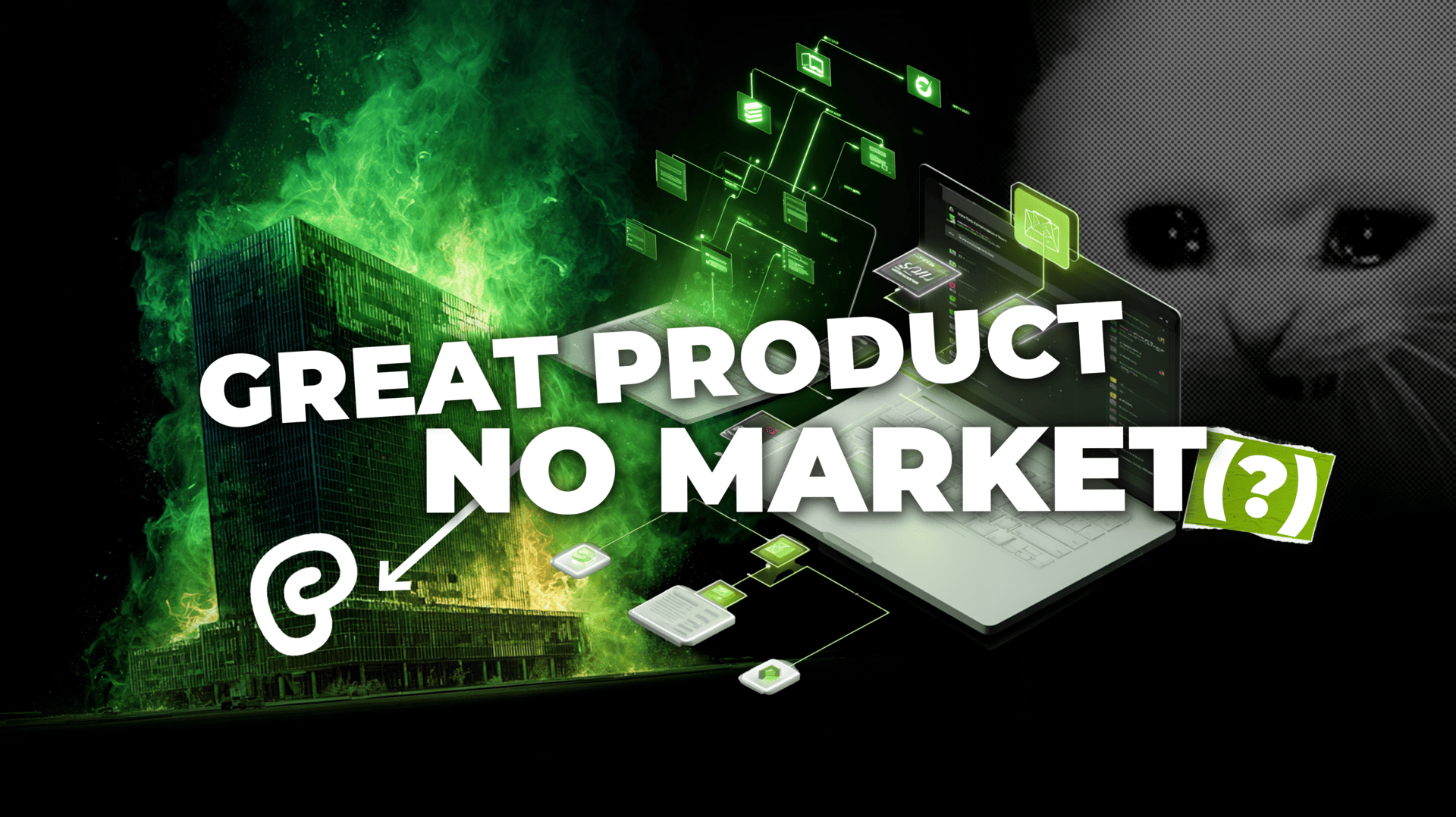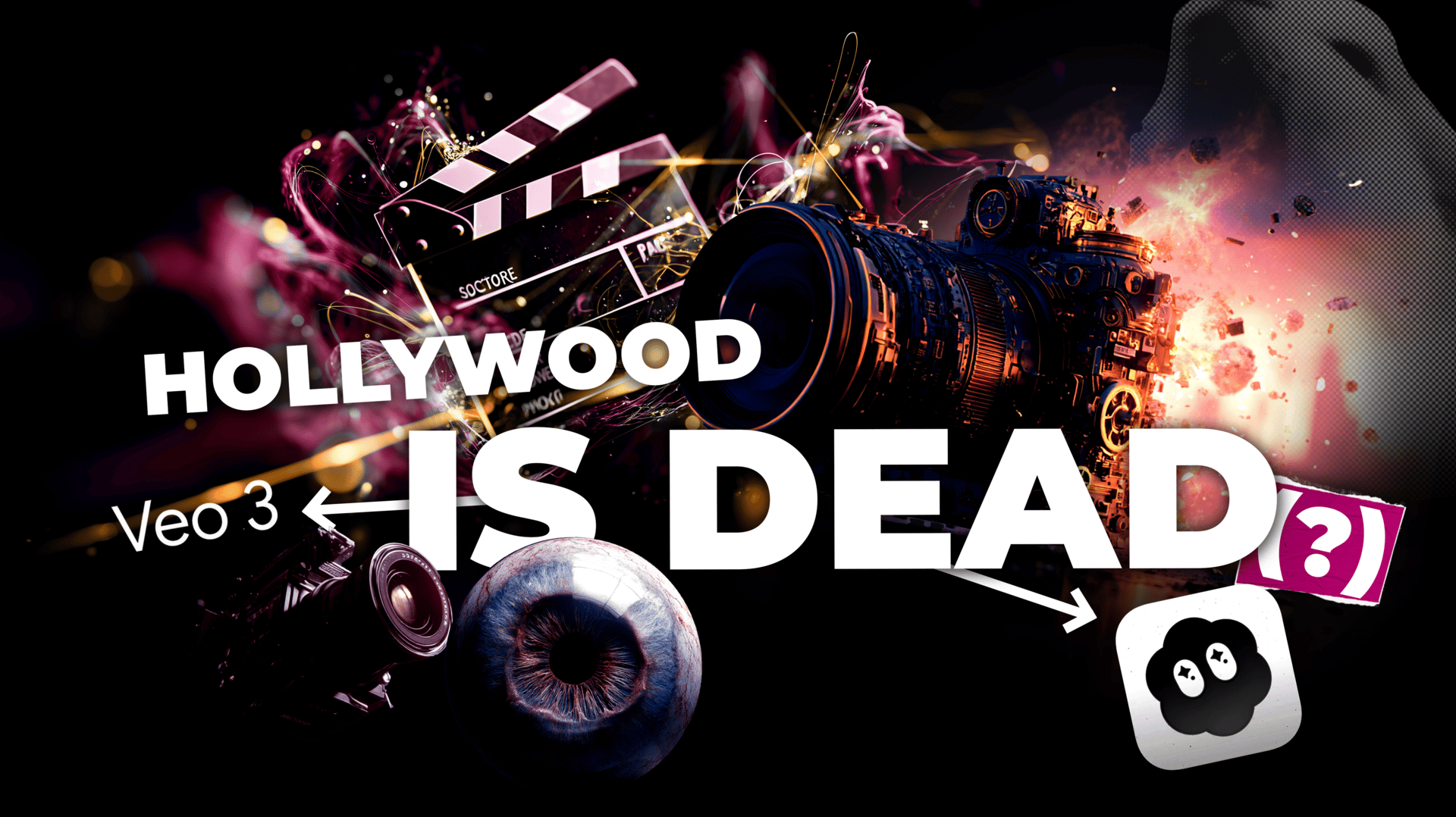Hey - It’s Nico.
Welcome to another Failory edition. This issue takes 5 minutes to read.
If you only have one, here are the 5 most important things:
Plumb, a startup trying to become the “Substack of AI workflows”, has shut down. — learn more below
The odds of making it: A new look inside startup growth.
Spotify partners with record labels to create ‘artist-first’ AI music products.
Smart ring maker Oura raises $900M.
Sora 2 videos are everywhere. — learn why this matters below
Building AI copilots or agents? Check today’s sponsor: CData Embedded Cloud powers reliable, real-time data connectivity for companies like Google Cloud and Salesforce, and it’s now available to supercharge your AI features.
Build great AI experiences with reliable data connectivity AD
Software leaders, as your teams work urgently to build AI copilots and agents, connectivity to your customers’ data is critical to ensure these features are not just expensive chat interfaces.
Trusted as the connectivity backbone for Google Cloud, Salesforce Data Cloud & Palantir's most demanding AI deployments, CData Embedded Cloud is now here to power your AI initiatives.
Build robust, secure, real-time connections to your customers’ data sources so they don’t have to go anywhere else to find their answers. Now, your customers can ask questions in natural language and make updates across all their data sources directly within your UI.
Transform copilots and agents from basic answer-givers into true discovery and decision partners, while CData handles the data connectivity layer.
This Week In Startups
🔗 Resources
Everyone should be using Claude Code more.
Build a Billion-Dollar Startup with a minimal team thanks to AI.
The odds of making it: A new look inside startup growth.
Turn LinkedIn thought leadership into revenue (100% done-for-you). Playbookz writes your posts, 50k views guaranteed in 28 days. *
📰 News
Spotify partners with record labels to create ‘artist-first’ AI music products.
Pinterest adds controls to let you limit the amount of ‘AI slop’ in your feed.
Anthropic launches new version of scaled-down ‘Haiku’ model.
Google released Veo 3.1.
💸 Fundraising
Jack & Jill raises $20 million to bring conversational AI to job-hunting.
Smart ring maker Oura raises $900M.
Stoke, a reusable rocket startup, raises $510 million.
AI startup Lila Sciences raises $115 million backed by Nvidia.
* sponsored
Fail(St)ory

Workflows for Sale
Last week, Plumb shut down. They nailed a clean builder and a marketplace to sell workflows, but distribution outran product-market fit.
Here’s what they built, what broke, and what you can use.
What Was Plumb:
Plumb started as a clean, creator-friendly node based workflow editor. You wired nodes like “Generate image,” “Parse PDF,” “LLM prompt,” “Search the web,” and created complex AI workflows fast.

While this might look like a copy of editors like Zapier, Make or n8n, Plumb’s goal was not in the tooling but rather in the distribution. Their pitch was “Substack for AI workflows”.
When you built a workflow, the platform automatically generated a landing page for it. Creators could then tune the page, set a price for their workflow, and then share it and sell it. Other users could subscribe to the workflow and start using it, without a need to see the prompt or the logic.
Take, for example, one of the automations I found in their marketplace: A “Market Update Newsletter Writer”. You give it a PDF with market trends and it returns a newsletter ready to be sent. It’s a tiny workflow, but it was built, distributed and monetized in minutes rather than weeks.

Another interesting thing was their product philosophy: determinism over randomness. Plumb believed that controlled workflows worked better than agents. While agents wander and hallucinate, a workflow runs a defined path, logs each step, and returns structured output you can debug. Plumb also kept humans in the loop: pause to ask for context, collect input, inject it downstream, continue.
The Numbers:
📍 Founded: 2020
💸 Total raised: $9.8M
🛑 Shut down: October 2025
Reasons for Failure:
They invented a business model nobody asked for: Plumb built “workflow subscriptions”, a novel system where users paid recurring fees to run other people’s automations. It sounded smart, but, according to the founder, no one cared.
No vertical, no urgency: Plumb never picked a niche or a high-value task to solve first. They built flows that were interesting, not essential. Without a clear “this saves me money today” story, even beautiful tools collect dust.
They locked execution inside Plumb. To charge credits and hide the workflow, every run had to start in their app. That made webhooks, MCP, and other triggers hard, because those fire from the outside. Without easy triggers you cannot plug into email, CRMs, or data pipelines. Teams need automations that fire from their systems, not a page they have to visit.
Why It Matters:
Distribution can’t replace product-market fit. A landing page for every flow is cute; a trigger that saves ops time is revenue.
Pick one painful job and own it. General marketplaces impress in demos, then fade in production without a vertical wedge.
Trend

Sora 2 and the Rise of AI-Generated Media
Every few months, there’s a new “holy shit” moment in AI video. This time it’s Sora 2, OpenAI’s latest model, that makes last year’s demos look like flipbooks.
In the last two weeks, the internet hasn’t stopped churning out clips that look so real they’ve already fooled millions.
Why It Matters:
AI video just crossed the realism threshold. The tech finally understands physics, continuity, and sound. The trifecta that separates “toy” from “tool.”
Distribution and creation are merging. OpenAI launched a TikTok-style app built directly on top of the model.
The next media gold rush is on. Meta, Google, and everyone else are racing to own the new format before Hollywood or advertisers catch up.
Sora 2
OpenAI dropped Sora 2 on September 30, calling it their “GPT-3.5 moment for video.” Not hyperbole. This thing doesn’t just render pretty frames, it simulates real-world physics. A basketball bounces off the rim. A shirt stays red across shots. Shadows behave like they’ve actually met the sun.
The biggest leap is audio. Native, synced, realistic sound baked straight into the generation process. Veo 3 had this first, but OpenAI made it default. Now, dialogue, footsteps, and background noise match the visuals perfectly.
Sora 2 also nails multi-shot continuity. Look at the following example and notice how the character stays perfectly consistent across all shots. Same clothes, same face, same expression.
That’s not just a technical milestone, it’s the point where video generation becomes commercially viable. The model can be used for ads, storyboards, product demos, even training simulations. OpenAI confirmed an API is coming soon, which means any app could spin up videos on the fly.
The Sora App
Alongside the model, OpenAI launched the Sora app, a vertical-video social feed where users generate and share clips directly from the model. Think TikTok, but every post is synthetically created.
You can write a prompt or upload an image to animate. You can remix someone else’s video. You can even add yourself to a scene through a feature called Cameos: a one-time recording that lets the model generate a full digital likeness of you, voice included. Then friends can remix you into their clips, with your consent.
What’s different here is intent. OpenAI isn’t just releasing another model, it’s building a whole platform. The social layer ensures people don’t just test Sora once and move on. They stay, remix, and share.
The Trend: AI-Generated Media
An MIT report recently noted that AI hasn’t disrupted many industries yet except one: media. It’s not an accident. Video is fast, emotional, and monetizable.

Advertising agencies are already using generative video to cut costs and skip shoots. The economics are irresistible: seconds instead of weeks, pennies instead of thousands.
Meta sees the same thing. Last week it rolled out Vibes, a new short-form AI video feed inside the Meta AI app. You browse AI-generated videos, remix them, post your own. It’s basically Sora with a different skin.
The Idea
The Sora 2 API will open the floodgates. When you can generate realistic video with synced audio in seconds, entire categories of startups become feasible. Here are some ideas:
AI-native ad studios. Imagine a platform that generates and A/B tests hundreds of hyper-personalized video ads automatically, updating based on real-time performance. Every brand becomes its own mini-production house.
Concept testers for entertainment. Make a pilot for a show or a teaser for your indie game in a weekend, post it, and gauge traction before spending a dollar on full production.
Trust infrastructure. As synthetic media floods feeds, there’s a massive gap for tools that verify provenance and detect AI content in real time. If everyone’s making fake videos, someone has to make the authenticity meter.
Help Me Improve Failory
How useful did you find today’s newsletter?
That's all for today’s edition.
Cheers,
Nico

